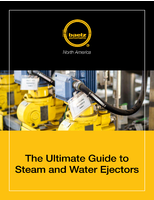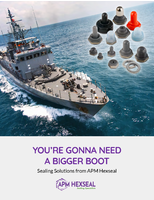Proposed ASTM Standard applies to metal powder bed fusion quality.
Press Release Summary:
Requirements of ASTM WK46188, Practice for Metal Powder Bed Fusion to Meet Rigid Quality Requirements, will apply to production components and mechanical test specimens using powder bed fusion with both laser and electron beams. To enhance safety of additively manufactured parts, this standard will illustrate what critical parameters for successful powder bed fusion are, how to determine upper/lower limits of process, as well as how to ensure all components are exactly the same.
Original Press Release:
ASTM Additive Manufacturing Committee Developing Proposed Standard for Metal Powder Bed Fusion Quality Requirements
Products for medical implants and aerospace components are two of the applications of powder bed fusion additive manufacturing. A proposed new ASTM standard, WK46188, Practice for Metal Powder Bed Fusion to Meet Rigid Quality Requirements, describes the operation and production control of powder bed fusion machines and processes to meet rigid quality standards.
According to Shane Collins, ASTM member and director, program management, Incodema3D LLC, ASTM WK46188 will enhance the safety of additively manufactured parts across a variety of industries. The proposed new standard has been accepted as a Joint Group project per the Partner Standards Development Organization cooperation agreement between ASTM International Committee F42 on Additive Manufacturing Technologies and ISO TC261 on Additive Manufacturing.
“Additive manufacturing is based on the capabilities of the machines used in the process,” says Collins. “The machines have been historically designed for the rapid prototyping industry, and we are taking those same machines and now asking them to make safety critical components. ASTM WK46188 will illustrate what the critical parameters for successful powder bed fusion are, how to determine the upper and lower limits of the process and ensure all components are exactly the same.”
The proposed standard’s requirements will be applicable for production components and mechanical test specimens using powder bed fusion with both laser and electron beams.
“Even though the advantages of powder bed fusion are enormous, the process depends on expensive machines and, therefore, the components produced are high value at a high price,” says Collins. “The typical applications are for patient-specific implants and relatively low volume aerospace and defense related components.” According to Collins, lower airfares and reduced greenhouse gas emissions are potential benefits enabled by the use of airplane components created through powder bed fusion.
Collins notes that primary users of ASTM WK46188, once it has been approved, will be tier 1 and tier 2 suppliers that are setting up a powder bed fusion facility or engineers of original equipment manufacturers that will use ASTM WK46188 as a guide for writing internal standards.
ASTM WK46188 is being developed by Subcommittee F42.05 on Materials and Processes, part of F42.
Collins notes that F42.05 invites all interested parties to join in the development of WK46188 and other proposed standards.
ASTM International welcomes participation in the development of its standards. For more information on becoming an ASTM member, visit www.astm.org/JOIN.
For more news in this sector, visit www.astm.org/sn-quality or follow us on Twitter @ASTMQuality.
ASTM Committee F42 Next Meeting: Jan. 2627, 2015, ASTM International Headquarters, West Conshohocken, Pa.
Technical Contact:
Shane Collins
Incodema3D LLC
Ithaca, N.Y.
Phone: 805-427-0019
scollins@incodema3d.com
ASTM Staff Contact:
Pat Picariello
Phone: 610-932-9720
ppicariello@astm.org
ASTM PR Contact:
Phone: 610-832-9603
bschindl@astm.org




